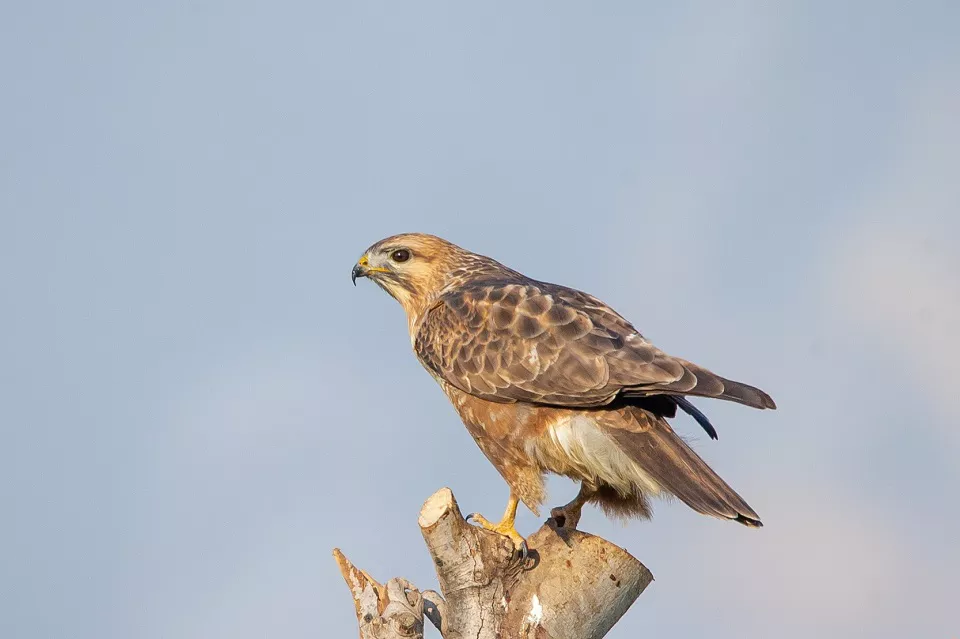Buzzards, also known as hawks or birds of prey, are a common sight in many parts of the world. These birds are known for their sharp talons and keen eyesight, which they use to hunt for small mammals and birds. However, despite their impressive hunting skills, buzzards are not universally loved. In fact, there are some who view these birds as pests, and who believe that they should be hunted or otherwise eliminated from the environment. But are buzzards protected by law? The answer, as it turns out, is yes.
The Legal Status of Buzzards
In many countries, including several European nations and the United States, buzzards are granted legal protection. The specific regulations may vary from region to region, but in general, these laws aim to safeguard these raptors from harm and ensure their survival. The protection typically extends to buzzards’ nests, eggs, and young, as well as the birds themselves.
United Kingdom: A Haven for Buzzards
The United Kingdom is home to a significant population of buzzards, and these birds have experienced a remarkable resurgence in recent decades. In the UK, buzzards are listed as a Schedule 1 species under the Wildlife and Countryside Act 1981. This designation affords them the highest level of protection, making it illegal to kill, injure, or take a buzzard, or interfere with their nests, eggs, or young without obtaining the appropriate licenses.
Europe: EU Birds Directive
Under the European Union Birds Directive, all wild bird species are granted protection throughout the EU member states, including buzzards. The directive prohibits activities such as deliberate killing, capturing, and trading of these birds. Additionally, it safeguards the habitats necessary for their survival. The European countries have implemented this directive by enacting their own legislation to protect buzzards and other avian species.
United States: Migratory Bird Treaty Act
In the United States, buzzards fall within the ambit of the Migratory Bird Treaty Act (MBTA) of 1918. The MBTA provides protection to a wide range of migratory bird species, including buzzards. It prohibits the hunting, capturing, killing, or possession of these birds without a valid permit. Furthermore, the act safeguards their nests and eggs from disturbance or destruction.
Conservation Efforts for Buzzards
To ensure the long-term survival and well-being of buzzards, numerous conservation efforts have been undertaken worldwide. These initiatives aim to address threats and promote suitable habitats for these birds of prey. Some key conservation measures include:
Habitat Protection: Preserving and restoring habitats crucial for buzzards is vital. This includes maintaining diverse landscapes such as woodlands, grasslands, and hedgerows that provide suitable nesting and foraging areas.
Legal Safeguards: Strengthening legal protections and enforcing existing legislation is crucial in preventing illegal activities such as persecution, poisoning, or disturbance of buzzards. Strict penalties and public awareness campaigns can play a significant role in curbing these threats.
Monitoring and Research: Conducting regular surveys and research projects helps gather data on buzzard populations, their behavior, and potential threats they face. This information aids in developing effective conservation strategies and monitoring their impact over time.
Collaboration and Awareness: Collaborative efforts between conservation organizations, governments, landowners, and the public are essential for successful buzzard conservation. Raising awareness about the importance of these birds and fostering a positive attitude towards their presence can encourage local support and engagement in conservation initiatives.
Supplementary Feeding: In some cases, supplemental feeding programs have been established to support buzzards during periods of food scarcity. These programs can contribute to their survival, particularly in regions where natural prey availability is limited.
Conclusion
Buzzards, as remarkable birds of prey, hold significant ecological value and contribute to the biodiversity of our planet. Recognizing their importance, many countries have implemented legal protections to ensure their conservation. The United Kingdom, Europe, and the United States are among the regions that have specific laws in place safeguarding buzzards and their habitats. However, legal protection alone is not enough. Conservation efforts aimed at habitat preservation, research, awareness, and collaboration are crucial for the long-term survival of these majestic birds. By working together, we can ensure that buzzards continue to grace our skies for generations to come.


 Facebook
Facebook  Instagram
Instagram  Youtube
Youtube 